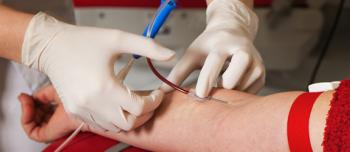In May 2010, the Food and Drug Administration (FDA) announced the availability of a document that provides blood collecting establishments and manufacturers of plasma derivatives with comprehensive recommendations to minimize the possible risk of transmission of Creutzfeldt-Jakob Disease (CJD) and variant Creutzfeldt-Jakob Disease (vCJD) from blood and blood products. vCJD, which is the human form of “mad cow disease” (bovine spongiform encephalopathy, BSE), is characterized by misshapen prion proteins that form spongelike holes in the brain tissue, causing degenerative brain disease and, ultimately, death.
“Guidance for Industry: Revised Preventive Measures to Reduce the Possible Risk of Transmission of Creutzfeldt-Jakob Disease (CJD) and Variant Creutzfeldt-Jakob Disease (vCJD) by Blood and Blood Products” replaces the January 2002 guidance document of the same title. This new document incorporates donor deferral recommendations for donors who have received a transfusion of blood or blood components in France since 1980, providing updated scientific information on CJD and vCJD and revising labeling recommendations for whole blood and blood components intended for transfusion.
The document also recognizes the AABB’s (American Association of Blood Banks) Blood Donor History Questionnaire Version 1.3 as an “acceptable mechanism” for collecting donor history information. The questionnaire is prepared by the AABB Donor History Task Force, which is composed of representatives from AABB, the American Red Cross, America’s Blood Centers, the Armed Services Blood Program, Canadian Blood Services, the Centers for Disease Control and Prevention, the Plasma Protein Therapeutics Association, liaisons from FDA and a public ethicist.





